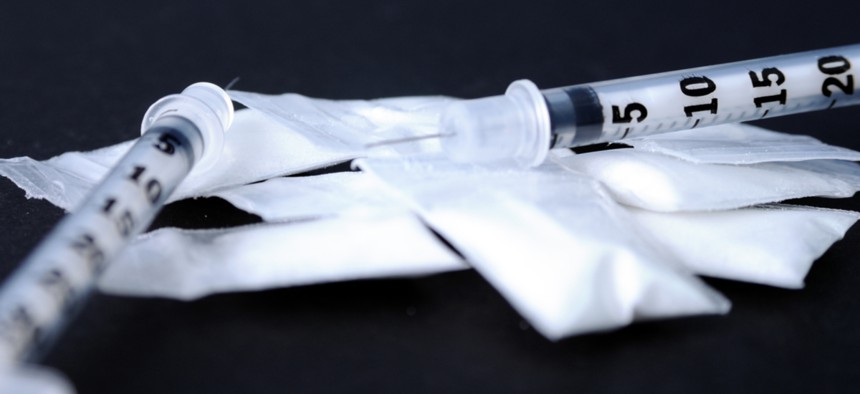Trump Opioid Declaration Falls Short in One Key Area—Money

Shutterstock
“We’re pleased to see that the administration is calling attention to the opioid epidemic, but we are concerned that this comes without any new resources,” according to NACCHO interim director Laura Hanen.
WASHINGTON — President Trump declared on Thursday that he has instructed acting Health and Human Services Secretary Eric Hargan to sign a formal declaration designating the opioid crisis a public health emergency. The announcement comes after more than a two-month delay since the president promised his administration would carry out such an action.
The move, however, is narrower in scope than the sweeping “national emergency” declaration that Trump originally indicated he would declare. The major difference between these two mechanisms is the money. A national emergency declaration would have prompted a rapid allocation of billions of dollars in federal funding to tackle the crisis. A public health emergency declaration does not. It’s a key distinction is being met with disappointment at the state and local levels.
So, what does this public health emergency declaration do?
The emergency declaration, which is temporary and lasts for 90 days with the possibility of renewal, allows HHS, and states whose governors make a request, to “make temporary appointments of specialists with the tools and talent needed to respond effectively” to the crisis.
The declaration also makes a regulatory change that allows prescribers to write prescriptions for medication used to treat opioid addiction via telemedicine. The aim of this change is to reach patients who live in remote areas of the country that have a shortage of providers with these kinds of prescribing capabilities. The White House has indicated that it will order the Labor Department issue funding in the form of “dislocated worker grants” that will go toward assisting those who are not participating in the workforce due to the opioid epidemic.
State and local officials welcome those changes, but say on the whole, the action taken today falls short in terms of what they need most—money.
“We’re pleased to see that the administration is calling attention to the opioid epidemic, but we are concerned that this comes without any new resources,” said Laura Hanen, the interim director and chief of government affairs for the National Association of County and City Health Officials, who spoke with Route Fifty over the phone.
“When you do a public health emergency, it’s a surge for 90 days,” Hanen pointed out, “and this is a very complex multifaceted, long-term problem that is going to need a significant infusion of resources, over a significant period of time if we’re going to wrap our arms around this.”
As of June this year, the public health emergency fund, the source of money for this type of declaration, contained a mere $57,000—pennies compared with the amount health experts estimate would be needed nationally to fully address the crisis. Andrew Kolodny, who heads the Opioid Policy Research Collaborative at Brandeis University, puts that figure closer to $6 billion annually.
“Our folks are the folks on the ground that bring together the many stakeholders to try to find solutions to this crisis. But at the same time, we need money along the spectrum—from prevention to treatment to recovery,” Hanen said.
And officials on the state level agree.
“The lack of resources is concerning to us since the opioid epidemic is presenting lots of challenges for states' budgets," Michael Fraser, the executive director of the Association of State and Territorial Health Officials, told Politico.
And, lack of funding isn’t the only limitation of the administration’s emergency declaration. Today’s action does not change a provision in law that has been seen as an obstacle to getting more people into treatment. That provision, called the institutions for mental disease exclusion, prevents Medicaid reimbursements from going to treatment facilities that have more than 16 beds. The administration has indicated that it will take up this rule in the future, but it is not included in the current declaration.
Likewise, the declaration made no changes to the pricing or availability of opioid overdose reversing drugs like naloxone.
Officials on the front lines agree that these changes will be needed if we’re going to make progress in halting the number of Americans battling addiction to opioids.
But officials like Hanen also concede that even those changes, without additional resources, wouldn’t do much good.
“It is a good thing for the federal government to coordinate their activities better and have a plan and a strategy. Those are all very good things,” Hanen added. “But a national plan and a national strategy ... is only as good as how much you can implement it, and implementing it requires money,” Hanen said.
Quinn Libson is a Staff Correspondent for Government Executive’s Route Fifty and is based in Washington, D.C.

NEXT STORY: These Cities Have the Nation’s Top-Ranked Real Estate Markets






